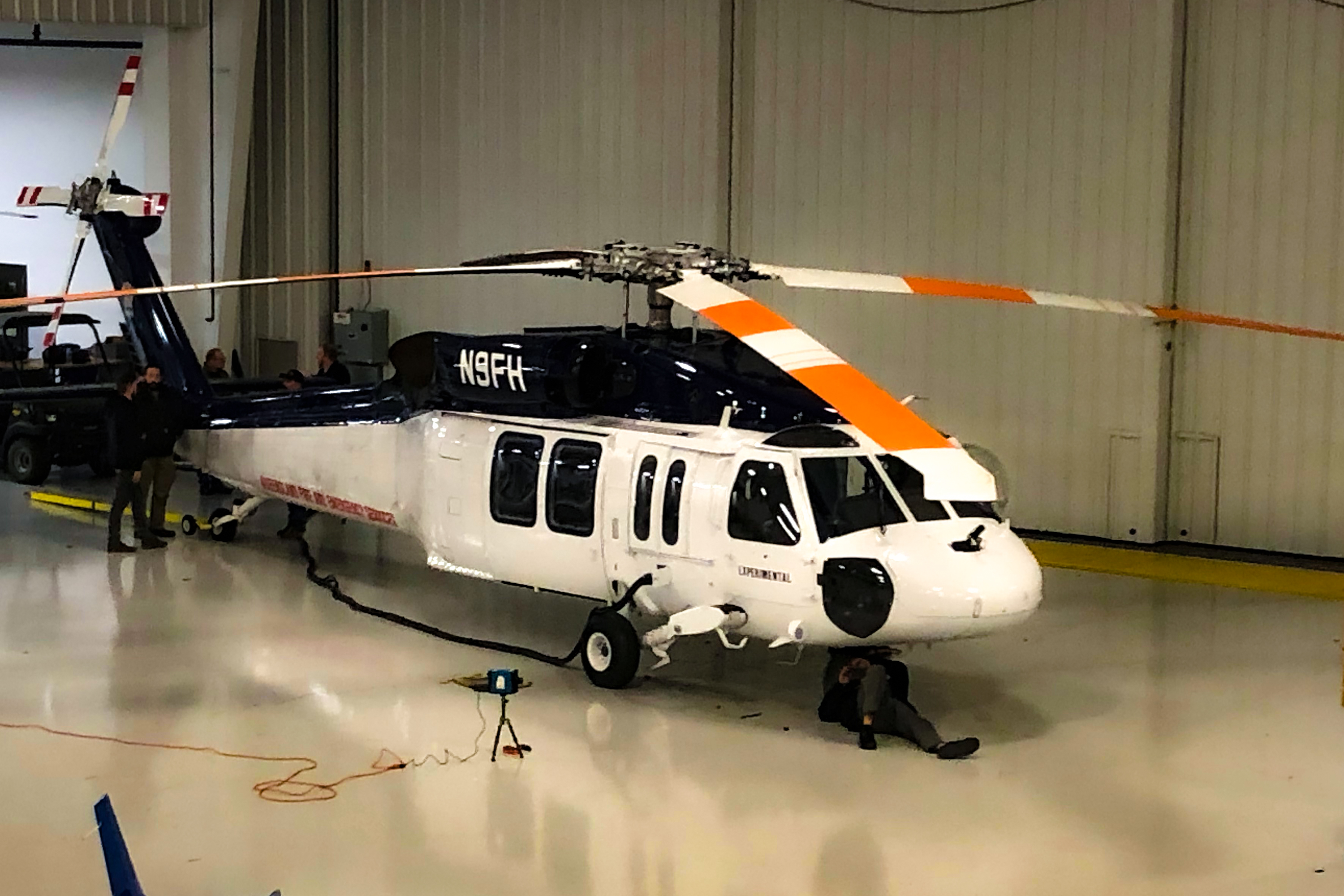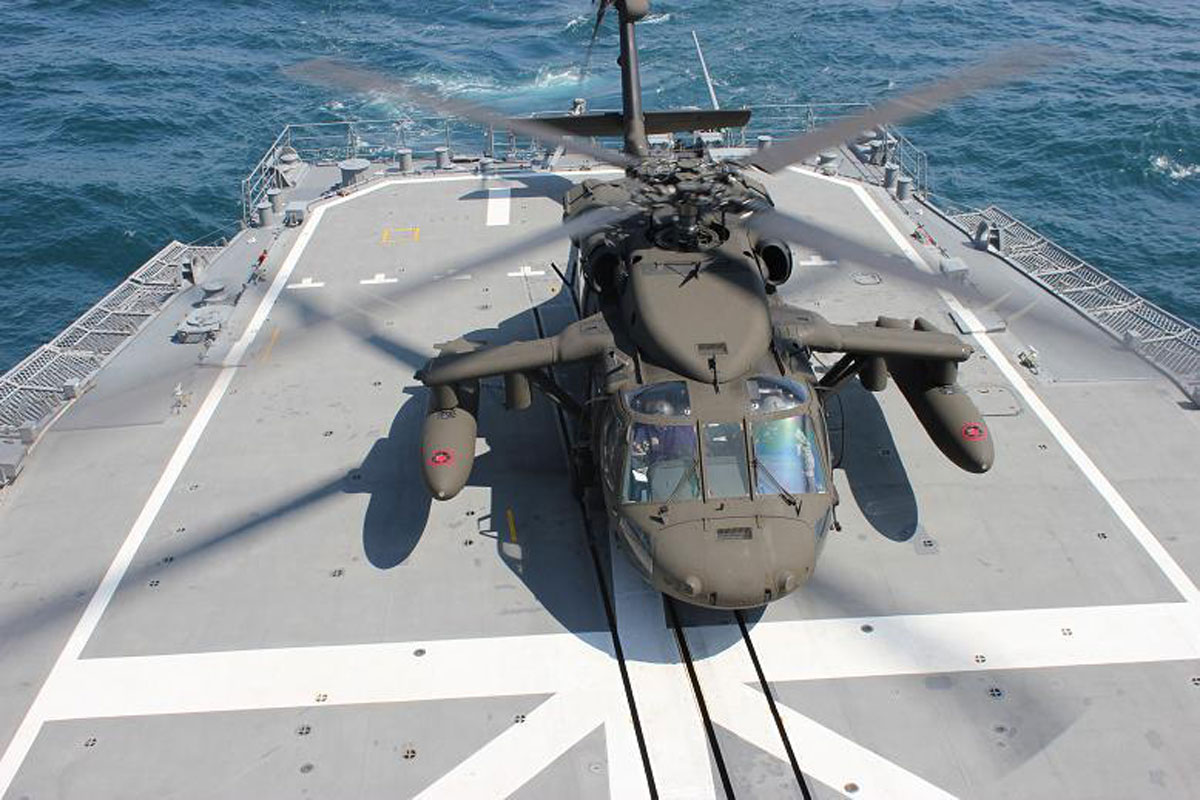Checking Out the Background and Advancement of the UH 60 Helicopter

Beginnings of the UH-60
The origins of the UH-60 helicopter can be mapped back to the late 1960s, a period noted by the need for a flexible energy airplane that can adjust to the evolving demands of modern war. The united state Military identified the need for a substitute for the older UH-1 Iroquois, which was coming to be increasingly inadequate for the intricacies of modern fight scenarios. In 1967, the Military launched the Utility Tactical Transport Aircraft System (UTTAS) program, which sought to create a multi-role helicopter efficient in numerous objectives, including troop transport, clinical discharge, and logistical assistance.
The design competitors drew in a number of aerospace producers, but it was Sikorsky Aircraft Corporation that ultimately safeguarded the agreement in 1972. The UH-60 Black Hawk was introduced, showcasing innovative layout components and advanced technology that set it apart from its predecessors. Its initial trip took place in 1974, and the airplane was officially embraced by the Army in 1979. The UH-60 rapidly acquired recognition for its robust performance, reliability, and adaptability, leading the means for its extensive use in military operations and solidifying its status as a cornerstone of U.S. Army aeronautics.
Key Style Features
Ingenious layout features of the UH-60 Black Hawk dramatically contribute to its functional effectiveness. Among one of the most noteworthy facets is its twin-engine configuration, which improves integrity and provides a higher power-to-weight proportion, making it possible for the helicopter to carry out under different problems. The aircraft's four-blade primary blades system supplies improved lift and ability to move, important for tactical goals.

In addition, the cockpit is designed for ideal visibility and comfort designs, featuring innovative avionics that improve pilot procedures. The modular style of the UH-60 permits for simple upkeep and versatility, making it ideal for different goal profiles, from army transport to medevac procedures. These key layout features guarantee that the UH-60 Black Hawk continues to be a flexible and trustworthy possession in army aviation, efficient in fulfilling the demands of contemporary war.
Technological Innovations
Recent technological innovations in the UH-60 Black Hawk have substantially enhanced its operational capabilities and adaptability. The integration of sophisticated avionics, such as electronic trip control systems and improved situational recognition screens, permits pilots to operate with enhanced accuracy and performance. These systems assist in improved navigation, communication, and information sharing, enabling the helicopter to work effectively in varied settings.
Additionally, the introduction of composite products has actually decreased the general weight of the aircraft while preserving architectural integrity. This decrease enhances fuel effectiveness and prolongs operational variety. The consolidation of sophisticated rotor innovation, including making use of four-blade, completely verbalized rotor systems, has improved lift performance and ability to move, permitting far better handling in numerous trip problems.

Additionally, advancements in propulsion systems, such as the T700-GE-701D engines, have actually raised power result and integrity - uh 60. These engines add to remarkable performance in high-altitude and hot-weather problems
Lastly, the integration of self-defense systems and boosted sensing unit bundles enhances the Black Hawk's survivability and goal performance. Collectively, these technological renovations make sure that the UH-60 Black click Hawk stays an important asset in modern-day air travel, capable of adapting to the advancing needs of armed forces and humanitarian missions.
Duty in Military Operations
As the foundation of U.S. Military air travel, the UH-60 helicopter plays a vital role in different armed forces procedures, serving as a versatile system for battle assistance, transportation, and medevac missions - uh 60. Its style incorporates the capacity to operate in varied environments, Click Here making it crucial for troop activity and logistical support in both standard and unusual warfare

In medical evacuation circumstances, the UH-60 has actually verified indispensable, considerably decreasing the time to move damaged soldiers from the field of battle to medical centers. Its innovative avionics and night vision capabilities further make certain objective success under address challenging problems. Generally, the UH-60 helicopter stays a vital asset, continually adapting to fulfill the progressing demands of military procedures and improving the efficiency of united state pressures worldwide.
Future of the UH-60
Looking ahead, the future of the UH-60 helicopter involves significant innovations in innovation and capabilities made to improve its functional efficiency. As army procedures develop, the UH-60 is anticipated to include cutting-edge innovations, including enhanced avionics, boosted weapons systems, and progressed interaction tools. These improvements will certainly enable better situational awareness and objective flexibility, guaranteeing that the UH-60 continues to be a vital possession on the battlefield.
One noteworthy growth is the assimilation of fly-by-wire systems, which will enhance trip control precision and decrease pilot work. Initiatives to update the airframe and engines intend to increase payload, variety, and rate capability, therefore expanding the helicopter's functional scope.
The future likewise holds pledge for raised interoperability with unmanned aerial systems (UAS), making it possible for coordinated objectives that take advantage of both manned and unmanned abilities. In addition, the incorporation of expert system and equipment understanding can maximize trip characteristics and maintenance processes, resulting in reduced operational costs.
Final Thought
The UH-60 Black Hawk helicopter represents a significant success in army aeronautics, progressing from the U.S. Army's first needs for a flexible utility airplane. Its cutting-edge style features and continuous technical improvements have ensured its relevance in various army procedures over the decades. As the needs of modern-day warfare change, the future of the UH-60 will likely entail more enhancements and adaptations, enhancing its standing as a crucial asset for armed forces worldwide.
The UH-60 Black Hawk helicopter stands for a considerable milestone in army air travel, emerging from the United state Military's quest for an extra dependable and versatile energy aircraft in the late 20th century.The beginnings of the UH-60 helicopter can be mapped back to the late 1960s, a period noted by the requirement for a versatile utility airplane that might adapt to the progressing demands of modern-day warfare. On the whole, the UH-60 helicopter stays a vital possession, continuously adjusting to meet the advancing needs of military procedures and improving the performance of U.S. forces worldwide.
Looking in advance, the future of the UH-60 helicopter involves considerable innovations in innovation and capacities designed to improve its functional effectiveness.The UH-60 Black Hawk helicopter represents a substantial success in military air travel, advancing from the U.S. Army's preliminary needs for a versatile utility airplane.
Comments on “Understanding the UH 60: Design, History, and Its Impact on Military Aviation”